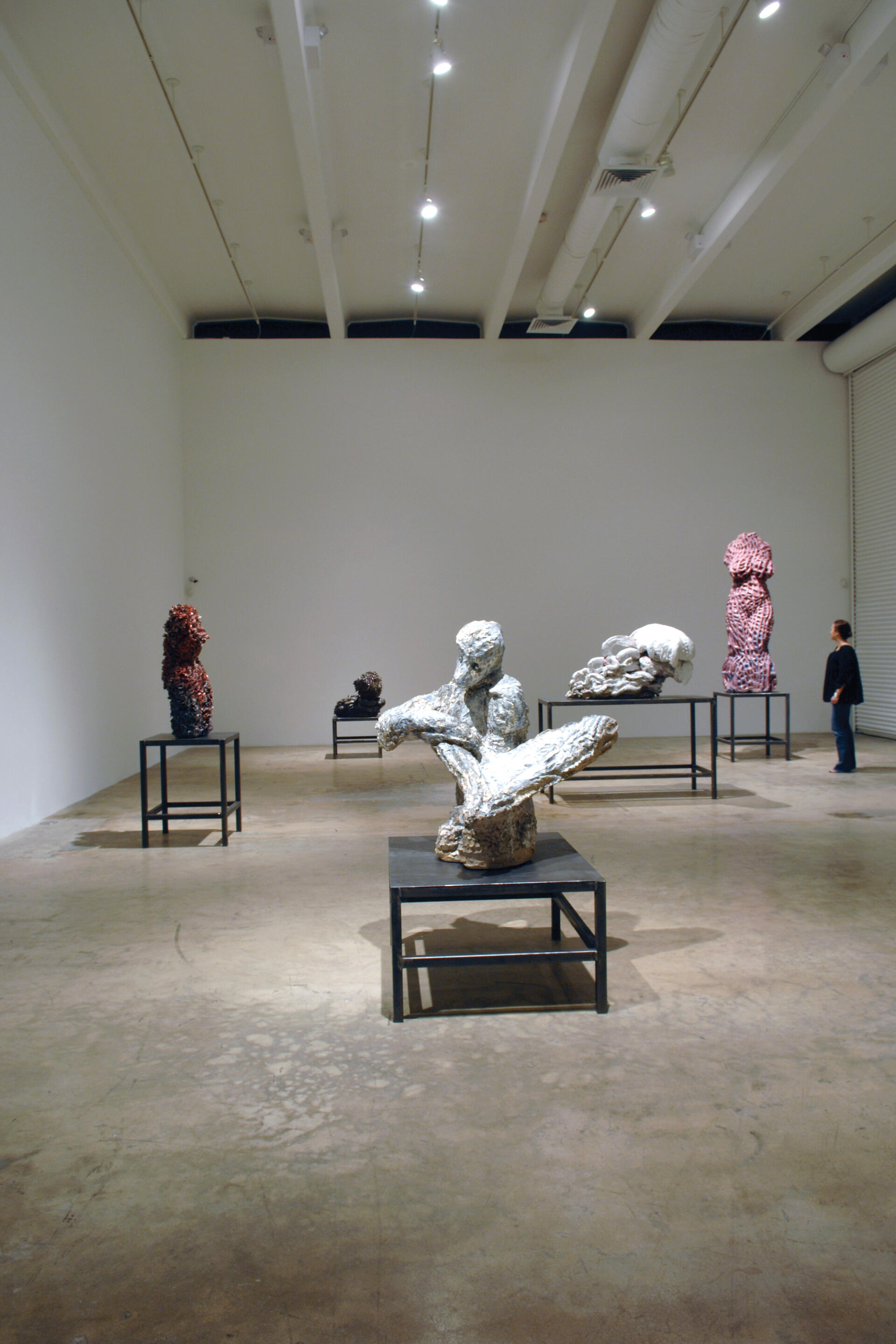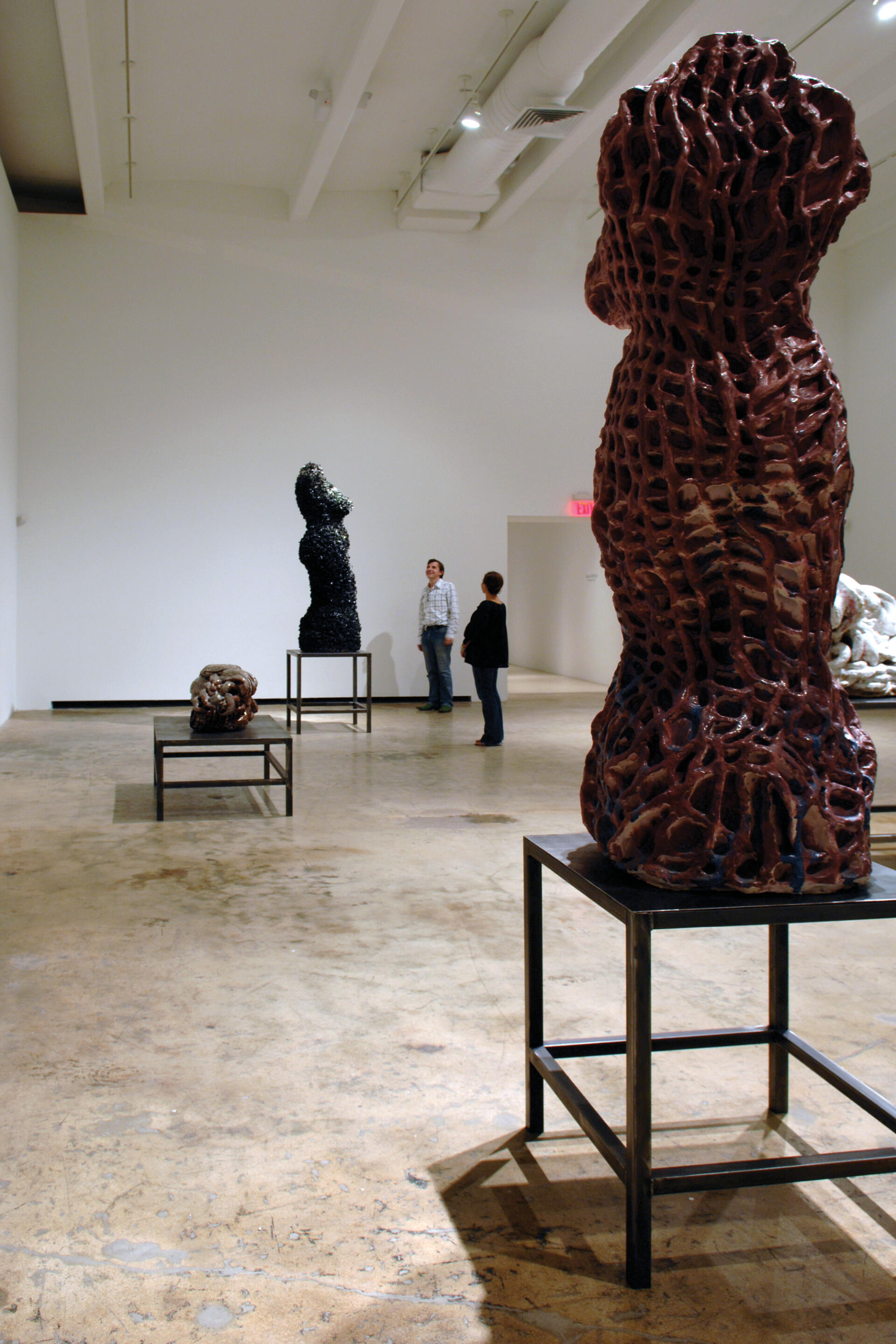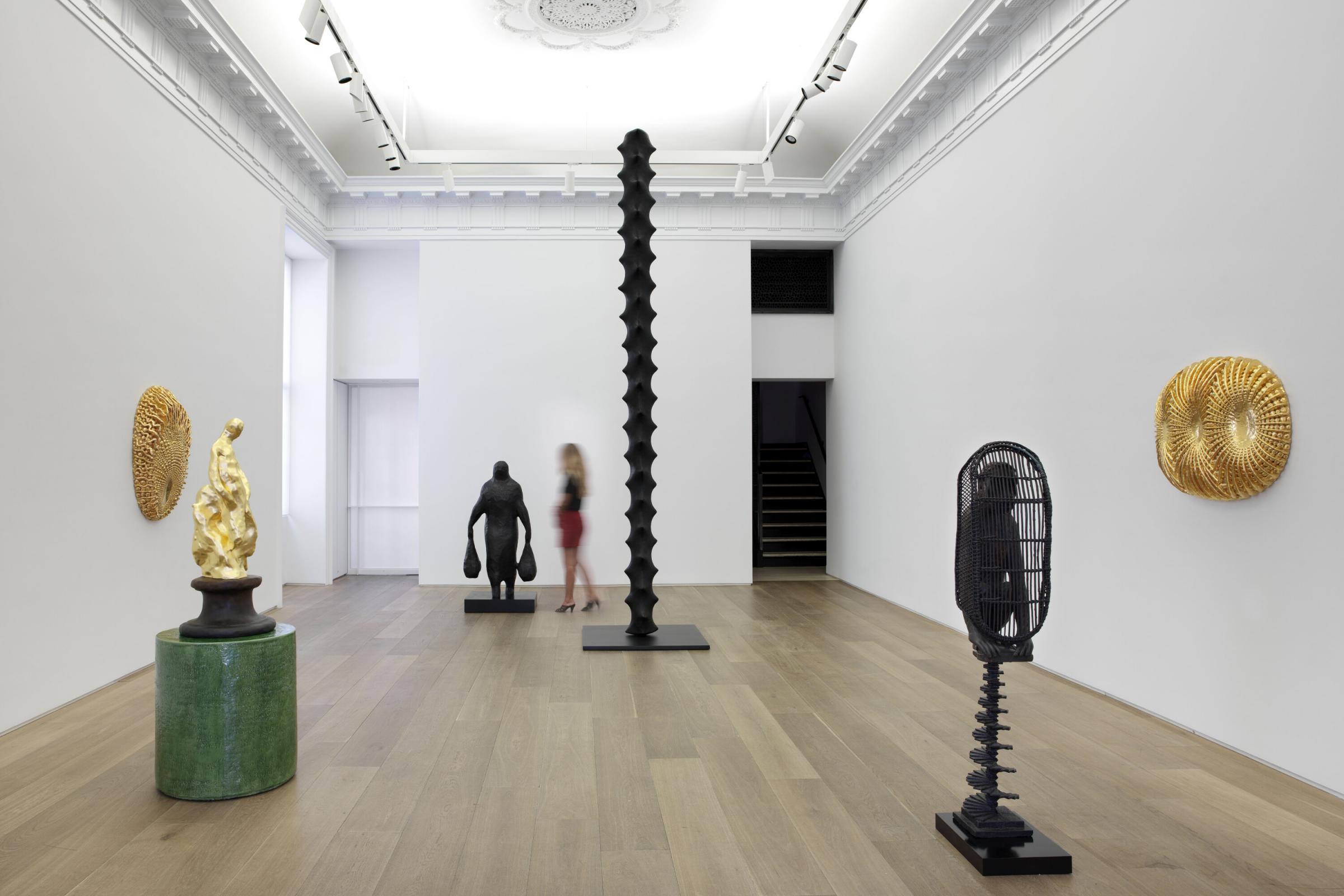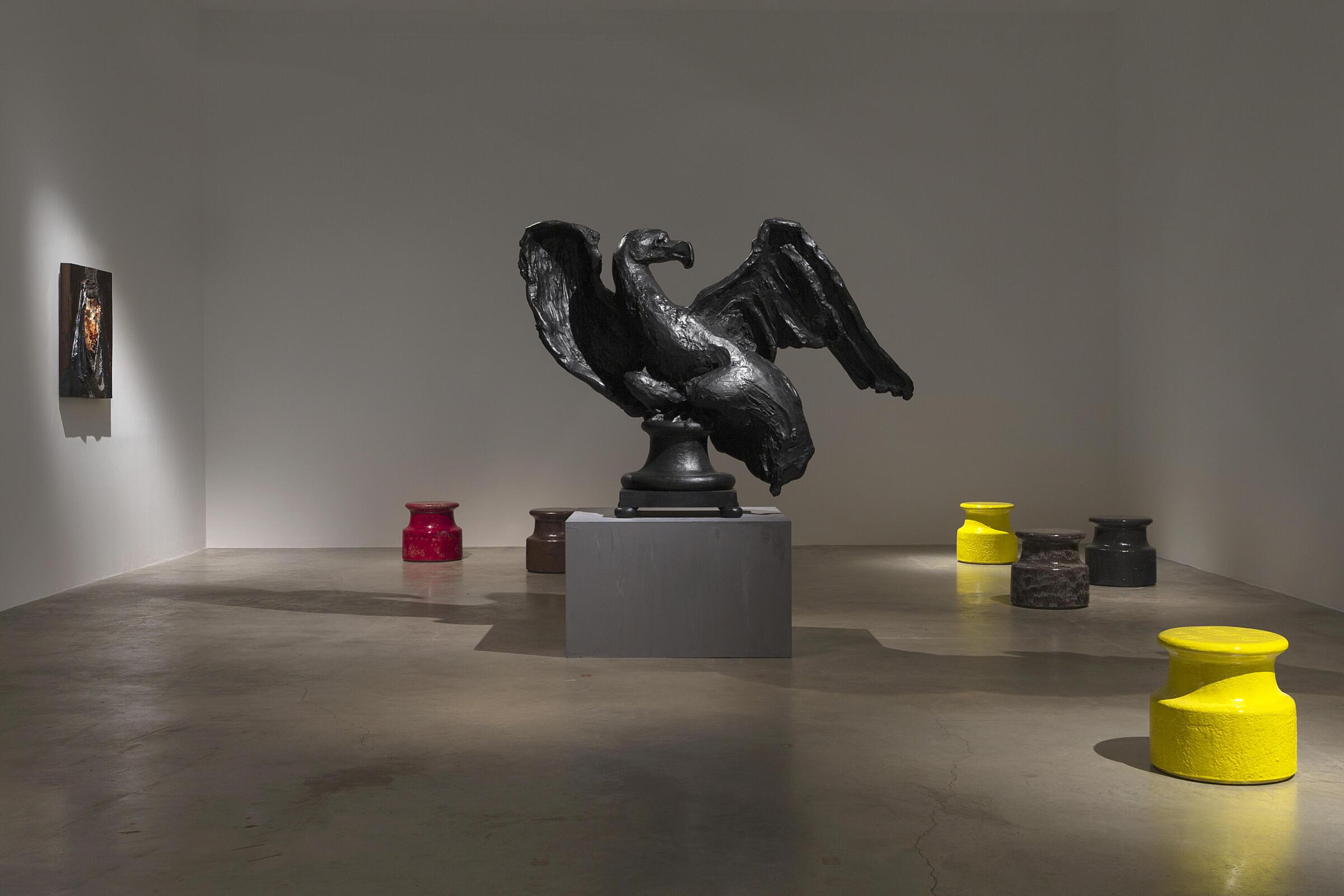
"Strange Fruit"
Perrotin Gallery
Miami
2008
"There are very few sculptors who have grasped, with so much relevance, the plasticity of Ceramics. An essential paradox, formal and narrative all at once, permeates Creten's work: a very powerful baroque treatment applied to classical shapes. In his early work, crude, popular imagery coexisted with an astonishingly beautiful and refined sensuality. In art as in man, Eros and Thanatos mingle in complex ways. Belgian artist Marcel Broodthaers' paintings of mussel shells led Johan Creten towards his ‘Odore di Femmina’ series. Not only are ‘mould’ and ‘mussel’ homophonous in French, but ‘moule’ also means ‘cunt’, and when Broodthaers referenced Belgium's favorite shellfish, he also evoked the female sex organ, the origin of the world. The "Odore di Femmina" are either reliefs, classical female busts with a pastillage of rose petals or fruits or seaweed instead of mussels. All kinds of metonymies come subtly into play, so as to evoke the woman through her perfume, the perfume through the flower and, lastly, the sex through the thousands of vulvar excrescences enshrouding her body. These female sandstone busts are reminiscent of antique Venus Anadyomene (‘Venus rising from the sea’), with measurements corresponding to Hellenistic models. These ‘Odore di Femmina’ take us back to the bacchantes, and to Ophelia as portrayed by 19th-century symbolist painting. Marine life, the sea as mother, are central to Creten's ‘Vagues’ series, with their impressive, truly monumental tentacle-like convolutions, reminiscent of sea monsters and leviathans. ‘La Très grande vague ou Une sirène pour Palissy’ (fittingly acquired by the Museum of Modern Art in Ostend) or ‘The Pearl’ (with the subhead ‘The Lovers - The Octopi’) are free of all ambiguities. From their impossible movements emerges the beauty of a monstrous kind of love, rendered as a mix of attraction and repulsion. Johan Creten spent two years at the Villa Medici in Rome in 1996, then three years in 2000 as an artist in residence at the Bass Museum of Art (Miami Beach). From June 2004 to January 2008, he was an artist in residence at the legendary Manufacture Nationale de Sèvres, the French national porcelain factory."
Ludovic RECCHIA




